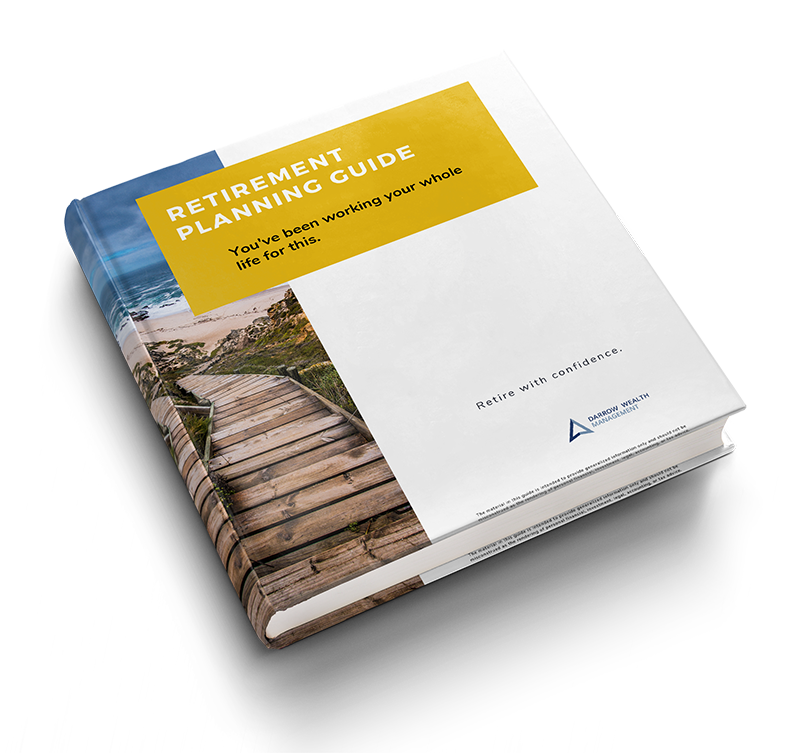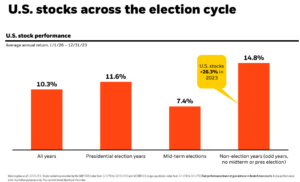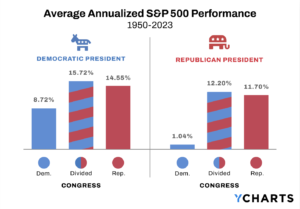5 reasons you shouldn’t make nondeductible contributions to an IRA
Are non-deductible IRA contributions worth it? Most high-income individuals are unable to make tax-deductible contributions to a traditional IRA due to IRS limits, yet their earnings level may allow the capacity to save more after maxing out a 401(k). Although any investor with earned income can make a non-deductible contribution to an IRA (up to $7,000 in 2024 if under age 50) and still take advantage of tax-deferred growth, it still may not be advisable. Some people may even end up paying taxes twice.
Here’s why non-deductible IRA contributions aren’t worth it
Here are 5 reasons to consider saving in a taxable brokerage account instead of making non-deductible IRA contributions.
Reason #1: You Can’t Just Take Out Non-Deductible Contributions
Assume you’re 60 years old and have an IRA worth $500,000. Of that, $60,000 is from non-deductible IRA contributions you’ve made over your lifetime. If you wanted to withdraw $25,000, could you do so tax-free? The answer is no.
The IRS Pro-Rata Rule applies to withdrawals from a traditional, SEP, or SIMPLE IRA with tax deductible and after tax (non-deductible, non-Roth) funds. It doesn’t matter which account the contributions are in or how many accounts you have. The Pro-Rata Rule determines the percentage of a withdrawal that will be tax-free and taxable.
How non-deductible IRA contributions are taxed when funds are withdrawn
Here’s the formula to find the tax-free percentage:
Total Basis (e.g. lifetime non-deductible contributions – previous nontaxable distributions) / Total IRA Assets (e.g. balance in all IRAs (except Roth) as of 12/31 + all distributions in the current year + outstanding rollovers)
To find the tax-free dollar amount, multiply the tax-free percentage by the full amount of IRA distributions throughout the year.
Using the above example, and assuming a $25,000 withdrawal on 12/30 and the aggregate value is as of 12/31, you can calculate the tax-free portion as follows:
$60,000 / $500,000 = 12% tax-free
$25,000 * 12% = $3,000 tax-free and $22,000 taxable as ordinary income
If this seems confusing and like a lot of work, that’s because it is! And this example is overly simplified.
Avoid the Double-Tax Trap on Non-Deductible IRA Contributions
If I need the money before retirement can I take nondeductible contributions out without penalty?
Nope. Thanks to the Pro-Rata Rule, you can’t take out only non-deductible IRA contributions. This is a problem if you need the funds for another purpose before retirement.
Using the above example, but assuming the investor is age 50 and the funds will be used to buy a new car, the implications are as follows:
Tax-free: $3,000
Taxable as ordinary income: $22,000
10% early withdrawal penalty: $2,200
Had the investor opened a brokerage account instead, the funds could have been withdrawn and used for any purpose at any time penalty-free, but subject to tax, though generally more favorable rates apply…more on that to follow.
Reason #2: Pay Less Tax Now or Maybe a Lot More Later with an IRA
The only reason to consider making an after-tax contribution to a traditional IRA is tax-deferred growth. If you had invested your non-deductible contribution in a taxable brokerage account, you’d have to pay tax on interest, dividends, and capital gains distributions annually, even if you don’t sell any shares.
While you avoid annual taxation when you make an after-tax contribution to an IRA, when you take distributions in retirement, the taxable portion will be taxed as ordinary income. In 2024, the highest marginal tax rate is 37%.
Capital Gains vs Regular Income
In a brokerage account, only short-term capital gains and non-qualified dividends are taxed at the higher ordinary income rates. Long-term capital gains and qualified dividends are currently taxed at much more favorable rates. In 2024, the rate is between 0% and 20% depending on your regular income bracket. (An additional 3.8% federal net investment income tax may apply to certain taxpayers).
Investors should consider whether the additional years of tax-deferred growth will be worth a tax rate that could be twice as high.
Reason #3: An IRA Increases Required Minimum Distributions
The Secure Act, and Secure Act 2.0, changed the age some retirees will need to begin RMDs. Investors born on or after July 1st, 1949 take RMDs starting at age 72 and now, individuals born after 1951 can delay until age 73 (though they can defer their first RMD until April 1st of the year after).
RMDs must be taken by 12/31 for every year thereafter (though if you choose to defer the first RMD until April, you will need to take another RMD by 12/31).
When you turn your RMD-eligible age, the IRS will require you to begin tapping IRAs (excluding Roth IRAs) and qualified retirement plans (e.g. 401(k) or 403(b) plans). The amount you must withdraw annually essentially equals the sum of your combined retirement accounts divided by your life expectancy.
Life expectancies are determined by the IRS in this situation and provided on the Uniform Lifetime Table. The greater the assets in retirement accounts, the more your RMD will be, regardless of whether you need the income or not.
How do RMDs work if you made non-deductible IRA contributions?
With the Pro-Rata Rule, when you make nondeductible contributions to an IRA, a certain percentage of your RMD is tax-free. However, because you made after-tax contributions, your overall pool of assets subject to RMDs increases.
Particularly for wealthy retirees, satisfying annual RMDs often requires distributions well in excess of capital needs. This can push individuals into a higher marginal tax bracket and cause other tax-related issues, like higher Medicare premiums.
Funds in a brokerage account are not subject to required minimum distributions. Remember, qualified dividends and capital gains aren’t included in a taxpayer’s ordinary income.
Reason #4: Risk of Paying Tax Twice Due
Here’s a major reason non-deductible IRA contributions aren’t worth it. One of the most misunderstood aspects of making non-deductible contributions to an IRA is the recordkeeping process. It’s up to the taxpayer to report non-deductible contributions to the IRS.
Once you make non-deductible contributions, you’ll use the same form to take a distribution or make a Roth conversion. The form is necessary as you’ll need to calculate the non-taxable portion of the withdrawal or conversion. The form itself is not especially complex, particularly if you’re working with a CPA. But it can create issues over a long period of time.
Burdensome recordkeeping requirements to avoid double-taxation
Imagine you’re 35 years old and make $5,000 non-deductible IRA contributions for five years. You have an accountant, and each time he files the form 8606. Fast forward 25 years, when you’re 65 years old and want to make a withdrawal from your IRA. You remember making after-tax contributions in your IRA, but can’t find any documentation as so many years have passed. Your accountant was a sole proprietor and has since retired. You decide to cut your losses and include the entire distribution in your taxable income. Congratulations, you’ve just paid income tax twice on the same $25,000.
Maintain separate accounts if you make after-tax IRA contributions
One way to help simplify the recordkeeping is to open a new IRA to house all after-tax additions. While this method can certainly help you keep everything straight, it’s far from foolproof. Recall the earlier formula to calculate the tax-free portion of a withdrawal. You’ll need to know (among other things) your contributions, excluding growth and previous tax-free withdrawals. That information isn’t available in your account details where you keep your IRA(s).
Even if you manage to keep records the whole time, consider whether all of the paperwork is worth the potential benefits.
Comparing Investment Options After Maxing Out a 401(k): Brokerage vs. IRA vs. Roth IRA
Reason #5: Inherited IRAs Miss Out on Big Tax Benefits
When an investor passes away with assets in a brokerage account, those funds will typically receive a ‘step-up’ in basis as of the date of death.
Here’s a simplified example: an individual purchased a mutual fund 10 years ago for $50/share. It’s worth $100/share on their date of death. The beneficiary’s basis for tax purposes is $100/share. The difference just escaped taxation!
Unlike recordkeeping requirements for IRA contributions, the IRS began requiring financial custodians to track and report adjusted investment cost basis in 2011.
However, when an individual dies with assets in an IRA, the beneficiary’s tax basis is the same as the decedent’s. There is no ‘step-up’ in basis. If the deceased had previously made non-deductible contributions, the beneficiary would need to locate the appropriate records and previous 8606 filings to exclude a portion of the withdrawal from their taxable income.
Given how difficult it can be to maintain even personal records over a lifetime, sustaining that discipline over multiple generations might be a tall order.
Further, under the Secure Act, which was passed in 2019, beneficiaries who inherit a retirement account from a non-spouse (e.g. a parent or relative) can no longer ‘stretch’ the distributions over their lifetime by taking RMDs. Instead, they will be forced to take the funds in 10 years – potentially sooner. The change won’t impact anyone who inherited a retirement account during 2019 or years prior.
Nondeductible IRA vs taxable accounts
Although an after-tax non-Roth addition to an IRA may not be your best option, there are other ways you can save for retirement and your other goals. If you’re not already maxing out your retirement plan at work, consider starting there. As discussed in the article, a taxable brokerage account is a completely flexible way to invest for any goal.
A Roth IRA would alleviate the majority of issues surrounding after-tax contributions, but wealthy taxpayers may need to consider a Roth conversion as there are income limits for regular participation. However, depending on your overall tax and financial situation, a Roth conversion may also be unadvisable, especially if you end up in a lower tax bracket in retirement.
Weigh the various tax benefits associated with retirement accounts against other considerations to avoid letting the tax-tail wag the dog. Remember, laws can change. Required minimum distributions became law in 1986 and the age changed in 2019, again in 2023, and will change yet again in 2033. The Roth IRA wasn’t born until 1997. Review your current strategy as you make changes in the future to ensure you’re still on the right track.
Last reviewed April 2024










